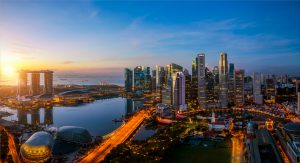From Colony to Nation: Continuity and Change in the Singapore Economy, 1946-2016
September 15, 2020

On 16 September 1963, Singapore was relieved of British rule and merged with Malaysia as an autonomous state within the Malaysian federation. After disagreements between the People’s Action Party (PAP) (the ruling party of Singapore) and the United Malays National Organisation (UNMO) (the ruling party of the federation), Singapore separated from Malaysia and achieved full independence in 1965.
Singapore has experienced substantial economic development since its colonial days. In part, this was enabled by suitable government policies. To better appreciate Singapore’s transformation and speculate on future changes, Senior Fellow Dr Lee Soo Ann (NUS Economics) reviews Singapore’s political and economic development in ‘Governance and Economic Change in Singapore’ (World Scientific, 2016).
Dr Lee groups Singapore’s historic governance model into four categories: the rule of the East India Company, as a British Government’s Straits Settlements colony, a British colony with self-governing rights, and an independent republic. Throughout these phases, the economy-centric governments integrated a multinational immigrant workforce and sustained economic growth.
For instance, when Singapore was declared a self-governing nation in 1955, the Central Provident Fund was inaugurated for long-term financing of state development projects. Moreover, as an independent republic, conscription was used for military defence at a relatively low cost. From these historic developments, Dr Lee elucidates how people and infrastructural development were mobilised for national economic growth and social development.
Looking forward, Dr Lee argues that future policies are likely to be more people-centric. Some examples include managing migrant inflows to favour domestic employment, and using conscription to prepare Singaporean men for future education and job training. Such policies account for the needs of its citizens while pursuing economic growth. Perhaps this reveals an acknowledgment that Singaporeans are a critical factor in sustaining economic growth down the generations.
Read the full article here.
